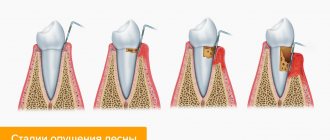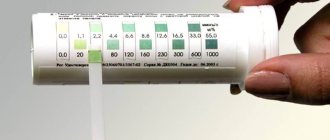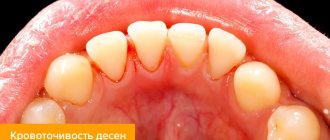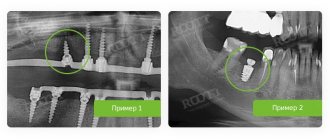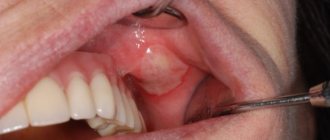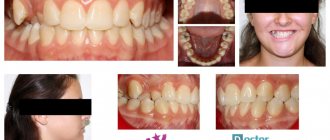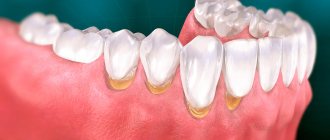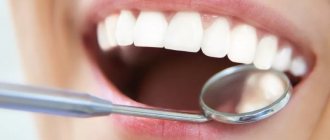What do we do when a tooth is pulled out? Even under the office, many examine the traces of the operation, fearing for its consequences. The fear intensifies after the end of the painkillers: how long should the wound hurt, and when will the bleeding stop?
Blood clot after tooth extraction
On the first day, a blood clot appears at the site of the pulled out tooth - an important condition for high-quality wound healing. In order for recovery to proceed without serious consequences, it is important to know what the wound should look like during extraction, what should and should not be done with it during the recovery period.
A few words about the procedure
Tooth extraction is a full-fledged surgical procedure. The operation consists of four stages.
- Treatment of the area around the tooth that is to be removed.
- Anesthetic injections - ampoules in carpules, where an anesthetic is combined with drugs to constrict blood vessels. Usually local anesthesia is used in the area where the nerve that innervates the problem tooth exits; if this is not enough, anesthetics are added without additional effect. When the medicine is injected into the inflamed gum with an acidic environment, part of it is inactivated, so additional anesthesia is used.
- Tooth extraction after the anesthesia has started working (the gums become numb, the blood vessels narrow). A scalpel is used to cut off the ligaments that fix the tooth. The choice of instruments and duration of the procedure depend on the condition of the tooth.
- Treatment of the oral cavity after removal: sutures (if the wound is torn or its edges are located far from each other) and a gauze swab soaked in a hemostatic agent (it must be held in the teeth for 20 minutes, since the effectiveness of the hemostatic drug increases compression of the wound). Do not rush to remove the tampon.
Gum section
Preparing for removal
Removal of a tooth
Installing a tampon
Stitching
Bleeding from the hole itself does not pose a mortal danger. In medical practice, only one case of death was recorded when blood from a wound entered the respiratory tract because the patient was intoxicated. The bleeding was complicated by cirrhosis of the liver, which interferes with clotting, and the woman had three teeth removed at once.
Prosthetics after removal within 24 hours or several days: indications
Some situations and diagnoses require dentists to act quickly. In this case, it no longer matters how long the gums take to heal after tooth extraction for dental prosthetics - the indications are important.
Within 24 hours after removal, the doctor will place a pre-fabricated temporary prosthesis in the following cases:
- loss of anterior units - due to potential mental and physical discomfort;
- edentia in children - otherwise rapid deformation of the jaws will begin;
- complete edentia in adults - usually we are talking about the removal of all teeth immediately before immediate prosthetics;
- loss of the last molars on both sides - in case of deep bite or diseases of the jaw joints;
- removal of antagonists - teeth of the upper and lower jaws located opposite each other.
In the first two weeks, prosthetics are indicated if an express protocol is followed - dentures are not always installed immediately, but 5-7 days after implantation - painlessly and quickly. After implantation, you can live a normal life - restrictions are minimal.
Removable dentures are placed in a similar period of time.
After operation
After three hours, the painkillers are still strong, so patients do not feel pain or it is mild. All this time, pure blood or ichor may be released from the hole. If a figure eight was removed, this can last all day, since the surgical area of the wisdom tooth is larger than that of other teeth.
Bleeding from the socket
On the second day, the hole has an unattractive appearance: a blood clot with a grayish coating. It looks like pus, but you shouldn’t be afraid of it: it’s fibrin, a substance that facilitates wound restoration. If everything goes well, the pain will be aching and will subside by the end of the day. If the nature of the pain is different - sharp, pulsating, and there is scarlet blood from the wound, you should urgently see a dentist.
At first, the hole may smell foul. There is no need to be afraid of this: blood accumulates there, and since it cannot be rinsed out, bacteria settle in the wound. If you feel normal, there is no fever, there is no reason to worry.
The rehabilitation process is normal if:
- What medicine is put into the hole after tooth extraction?
- when touching the wound, the ichor does not appear;
- the aching pain gradually disappears;
- feeling normal (temperature up to 38° is possible only in the first two hours);
- swelling on the cheek decreases (if it was not there before extraction, it should not appear at all);
- after 3 days the wound no longer bleeds.
2 weeks after removal
To reduce bleeding, you can make a tampon yourself. Positioning it so that the edges do not injure the blood clot, hold the napkin for half an hour. In the pharmacy chain you can buy a hemostatic sponge, which can be used in cases of heavy bleeding, for example, in liver failure.
Hemostatic sponge
The hole is closed with a hemostatic sponge.
You can take one or two tablets of Dicinone or Etamzilate (no more than 8 pieces per day).
Dicynone tablets
You cannot experiment with hydrogen peroxide: it reacts with blood components, destroying the blood clot and increasing blood flow.
After tooth extraction: when can you get dentures?
Methods of low-traumatic instant implantation allow you to immediately install artificial roots and load them with temporary fixed prostheses. Alternative replacement options dictate different treatment periods:
- “Butterfly”, an immediate denture, is a temporary solution for the short-term replacement of dental units. The prosthesis is placed on the day of the surgical appointment. They are fixed on adjacent crowns with special hooks.
- Bridges. Prosthetics are allowed 3-4 weeks after removal - the hole should heal and the gums should heal. Attaching the bridge requires grinding down adjacent units, which can result in accidental damage to epithelial cells. When you can install a bridge after tooth extraction, the doctor will tell you exactly at the interim appointment.
- Removable dentures – clasp, acrylic. When removing 2-4 teeth, you must wait 20-30 days to continue treatment. If one tooth is replaced, the period is reduced to 3-4 days.
In addition to the type of orthodontic structure itself, the timing of prosthetics is influenced by the reasons for tooth extraction.
How does the healing process work?
Even if there are no complications, the wound heals completely within four to six months.
- On the 2nd day, a blood clot appears in the socket - a protective gate against mechanical damage and infections.
- If healing proceeds normally, on the third day you can already see granulation tissue at the operation site.
- In the second week, the epithelium actively grows, and granulation tissue appears instead of a clot. Primary restoration of bone structures occurs.
- In 2-3 weeks, it displaces the blood clot and bone tissue is visible around the perimeter.
- Recreation of new tissues takes 30-45 days.
- In about 60 days, the hole is closed by osteoid tissue impregnated with calcium.
- After 4 months, the bone becomes an “adult”, with a porous structure.
- When the bone is fully formed, the wound should resolve to a third of the length of the root.
- After extraction, the gums atrophy and the process of subsidence continues for 6-12 months.
Stages of tissue healing after tooth extraction
Causes of untimely appearance of a blood clot
When a blood clot forms within half an hour after tooth extraction, this is normal. But it happens that a blood clot forms only several hours or even days after the operation, or the socket generally remains dry and unprotected. Why is this happening:
- long-term unstoppable bleeding: occurs against the background of some chronic diseases associated with impaired blood hemostasis and metabolic processes in the body, for example, diabetes mellitus. The problem is also caused by the patient taking drugs containing acetylsalicylic acid (for example, Aspirin) the day before or for a long time. In women, the pathology may be associated with surgery during menstruation. Read about all the causes of the problem and methods for solving it in the feature article on the website,
- vasoconstriction caused by the use of anesthesia: in this case, bleeding can begin only 1-3 hours after the operation,
- medical errors: a clot may not form because the specialist performed the operation too traumatically, cleaned the hole poorly and left tooth fragments inside. In general, experienced doctors, seeing that there are no prerequisites for the formation of a blood clot, resort to additional measures, for example, provoking bleeding or simply stitching the edges of the wound so that infection does not get inside.
What determines the rate of tissue regeneration?
The indicated time frames are indicative information, since the restoration process is influenced by many factors:
- doctor's qualifications,
- condition of the roots,
- hygiene procedures,
- gum health
If a tooth is removed during an exacerbation of the disease, healing slows down. A lacerated wound also tightens it, especially during operations on figure eights. Particular attention is paid to high-quality treatment after the procedure. If tooth fragments remain in the hole, they will interfere with the formation of a protective blood clot, and in the end everything will end in an inflammatory process, lengthening the recovery period.
Healing socket in place of a wisdom tooth
After removal, the surgeon will definitely give advice on proper care of the wound. If you ignore advice or follow it irregularly, complications are inevitable.
Since the blood clot covers the vulnerable hole, it is important not to disturb it. If you rinse immediately after visiting the dentist, you can wash it. An unprotected wound easily becomes infected.
Rinsing after tooth extraction is prohibited
If there are problems with changes in blood pressure, sometimes the wound bleeds for a long time. Once the blood pressure normalizes, bleeding usually stops.
How to remove a tooth
There are two extraction methods used in dentistry: simple and complex. Their choice depends on which teeth are being removed - premolars and molars with tangled branched roots are removed using a complex method. It is very difficult to pull out such elements entirely due to the fact that the tooth socket is penetrated by retaining ligaments and alveolar processes. Errors during the procedure or insufficient experience of the specialist lead to serious complications. Therefore, even despite the acute condition, always find out in advance where you can have a tooth removed from a good doctor with positive recommendations.
Factors complicating the operation:
- complete destruction of the coronal part;
- high fragility;
- acute inflammatory diseases;
- Unerupted or misaligned wisdom teeth.
The technology of the procedure depends on which teeth are removed. In some cases, tissue incision and suturing are performed.
Whether it is painful to remove a tooth or not depends largely on the condition of the element. Anesthesia is performed in all cases, with the exception of severe allergic reactions to all types of painkillers. With the development of extensive purulent lesions, the effect of the drug may be reduced.
How long it takes to remove a tooth depends on the complexity of the operation. On average, this takes no more than 5-10 minutes (including waiting for the anesthesia to take effect). In general, the procedure includes the following steps:
- anesthesia;
- if necessary, an incision is made into the mucous membrane to access the cervical area, or the doctor lowers the gum with an instrument;
- Use forceps to fix the tooth at the lowest point without excessive pressure;
- rocking and extraction from the hole is performed;
- returning the gum flap to its place.
If inflammatory processes are diagnosed in the oral cavity, a course of antibiotics is prescribed. In some cases, extraction is performed under general anesthesia.
In case of multiple lesions, the doctor determines how many teeth can be removed in your case during one visit, but more often it is 1–2 elements. This is because extraction is a traumatic operation that will take time to recover from. Too large areas of damage increase the likelihood of complications several times and take much longer to heal.
If after surgery the extracted tooth, or rather the hole left after it, hurts, this is a reason to consult a doctor. After the procedure, minor pain is allowed during the first 24 hours. Visit the dentist if your temperature rises, swelling increases, bleeding occurs, or pain spreads to the lymph nodes. These are symptoms of a wound infection. Untimely treatment can lead to alveolitis.
Complications during extraction
All unfavorable conditions lead to alveolitis - inflammation that develops after infection of the wound. Most often, problems begin after a blood clot falls out. Sometimes a clot does not form at all.
- Ear hurts after wisdom tooth removal
Alveolitis of the tooth socket
If you rinse your mouth, alveolitis is diagnosed after 1-3 days. The water pressure washes away the protection and inflammation is guaranteed. Its signs:
- increasing pain, gradually affecting neighboring areas;
- as inflammation spreads, general signs of intoxication intensify: fever, aching joints, loss of strength;
- swelling spreads to nearby areas;
- the mucous membrane turns red-blue due to impaired blood supply;
- bad odor from the problem area in which food debris accumulates.
All other complications also develop after the wound becomes infected. It is convenient to present their features in a table.
| Type of complication | Description |
| Dry socket | The blood clot has not formed, recovery time is delayed, and there is a risk of alveolitis. Most often it happens during active rinsing. A dry socket should be shown to the dentist. |
| Osteomyelitis | A serious consequence when alveolitis spreads to the jaw bone. Inpatient treatment is required. |
| Nerve damage | If the tooth has massive roots, there is a possibility of nerve damage. All tissues near the tooth lose sensitivity. For treatment, a vitamin complex and medications are used that accelerate the transmission of nerve impulses to muscle tissue. |
| Cyst | A serious complication requires surgical methods of elimination. |
After recovery, there is no need to delay prosthetics, since the absence of any unit of the dentition has a bad effect on the condition of the entire oral cavity.
Prosthetics
Doctors providing this service
Modern surgical dentistry makes it possible to avoid tooth extraction in most cases, but tooth extraction is still sometimes necessary.
An operation to remove a tooth should be performed only as a last resort, when other methods to save the tooth are no longer possible or when the tooth may cause other, more serious complications.
Indications for tooth extraction
A fairly common indication for tooth extraction is the need to sanitation the oral cavity in the presence of chronic periodontitis in the acute stage, when it is impossible to eliminate the inflammatory focus at the apex of the tooth.
In some cases, tooth extraction is performed to avoid more serious complications. For example, if you have teeth that can cause a cyst, inflammation or neuritis of the trigeminal nerve. If a tooth constantly injures the tongue or the mucous membrane of the cheek, and also interferes with a normal bite, it is also better to remove such a tooth. Multi-rooted teeth, which are the cause of odontogenic osteomyelitis, are removed. When fitting a removable denture, sometimes it becomes necessary to remove teeth, but there must be strict indications for this.
Surgical operations to remove a tooth are performed under effective anesthesia, taking into account all contraindications.
Teeth are removed when they are severely damaged by caries, affected by advanced periodontal disease (“sick gums”), have been broken so that they can no longer be restored, are incorrectly positioned in the mouth (for example, an embedded wisdom tooth), or in preparation for orthodontic treatment.
Before starting tooth extraction, the dentist examines the oral cavity, takes x-rays of diseased teeth, and evaluates their condition.
After a tooth is removed, the teeth adjacent to it begin to gradually shift, sometimes quite significantly, and this can greatly affect the general condition of the teeth. Removing even a single tooth can create serious chewing problems. To avoid these complications, the dentist will recommend replacing the extracted tooth with an artificial one.
Considering all the advances in operative surgery today, most patients prefer to replace the existing dentition defect by placing a dental implant (advantages of using dental implants), dental bridges or removable partial dentures.
